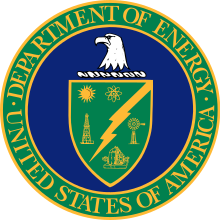قانون شركة المرافق العامة القابضة لعام 1935
38°53′13.17″N 77°1′33.69″W / 38.8869917°N 77.0260250°W
| قانون شركة المرافق العامة القابضة لعام 1935 | |
|---|---|
| تفاصيل الوكالة الحكومية | |
| البلد | |
| الإدارة | |
| تعديل مصدري - تعديل | |

قانون شركة المرافق العامة القابضة لعام 1935 المعروف أيضًا باسم قانون ويلر-رايبرن[1]، كان قانونًا أقره كونغرس الولايات المتحدة لتسهيل تنظيم المرافق الكهربائية[2]، إما عن طريق قصر عملياتها على الوضعية الفردية، وبالتالي إخضاعهم لتنظيم دولة فعال، أو إجبار التجريد بحيث أصبح كل نظام متكامل يخدم منطقة جغرافية محدودة.[3]
نبذة
[عدل]كان الغرض الآخر من قانون شركة المرافق العامة القابضة هو الحفاظ على الشركات القابضة التي كانت تعمل في الشركات الخاضعة للتنظيم من الانخراط في أعمال غير منظمة.[4]
الموافقة على القانون
[عدل]في 26 أغسطس 1935، وقع الرئيس فرانكلين روزفلت على مشروع القانون ليصبح قانونًا.[5]
إلغاء القانون
[عدل]في 8 أغسطس 2005، أصدر قانون سياسة الطاقة لعام 2005 من مجلسي الكونغرس وتم التوقيع عليه قانونًا من قبل الرئيس جورج بوش[6]، وألغى قانون شركة المرافق العامة القابضة.[7]
مراجع
[عدل]- ^ Codified at that time at 15 U.S.C. § 79 et seq.
- ^ "Public Utilities Holding Company Act | Encyclopedia.com". www.encyclopedia.com. Retrieved 2019-05-08.
- ^ Hyman, Leonard S. (1988), America's Electric Utilities: Past, Present and Future, Public Utility Reports, p. 74.
- ^ The SEC registration requirement was upheld by the Supreme Court in Electric Bond & Share Co. v. Securities and Exchange Commission, 303 U.S. 419 (1938). The divestiture provision was upheld in North American Co. v. Securities and Exchange Commission, 327 U.S. 686 (1946).
- ^ Curlee, Heather (2006). "Examining EPAct 2005: A Prospective Look at the Changing Regulatory Approach of the FERC" (PDF). Washington and Lee Law Review. Washington and Lee University School of Law. 63 (4): 1662–63. Retrieved July 17, 2012.
- ^ Deutsch, Claudia H. (13 Jun 1991). "The Boss Who Plays Now Pays". NYtimes.com. Retrieved 12 Apr 2014.
- ^ "Recommendations of the Federal Energy Regulatory Commission on Technical and Conforming Amendments to Federal Law Necessary to Carry Out the Public Utility Holding Company Act of 2005 and Related Amendments". Retrieved 2008-09-30.